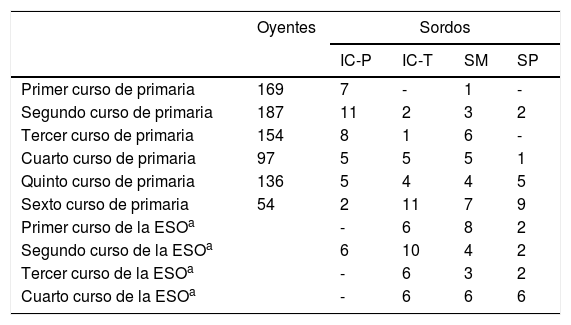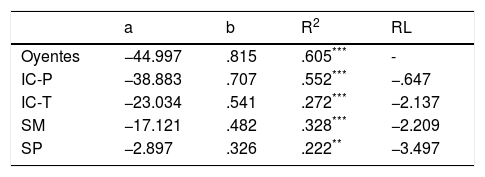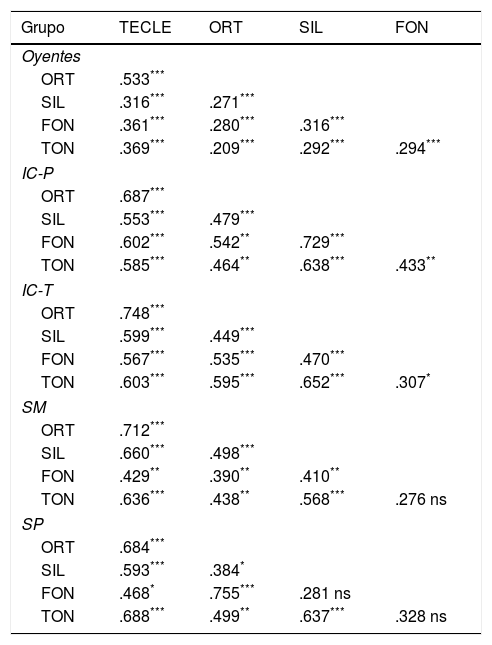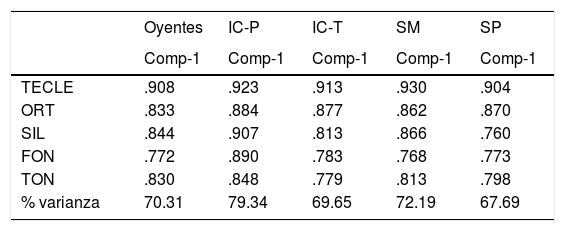El objetivo del trabajo fue determinar el papel de los códigos ortográficos y fonológicos en el aprendizaje de la lectura en estudiantes sordos con y sin implante coclear (IC). Se analizaron varias cuestiones: 1) si la calidad de las representaciones fonológicas que poseen y su capacidad para manipularlas depende o no del uso de IC; 2) si los niveles lectores que alcanzan dependen de la calidad de las representaciones fonológicas, y 3) si las representaciones ortográficas que almacenan provienen de las representaciones fonológicas correspondientes.
MetodologíaParticiparon 172 estudiantes sordos con edades entre los 6 y los 18 años, divididos en 4 grupos: alumnos con IC precoz, alumnos con IC tardío, alumnos sin IC con sordera moderada y alumnos sin IC con sordera profunda. Como grupo control, participó un grupo de 797 oyentes de igual edad. Todos fueron evaluados con una prueba de lectura, una de ortografía y 3 de metafonología.
ResultadosLos resultados muestran que los IC, sobre todo los colocados precozmente (antes de 30 meses), conducen a mejores resultados en todas las tareas experimentales. En el extremo opuesto encontramos el grupo con sordera profunda sin IC. Las representaciones ortográficas parecen almacenarse utilizando las representaciones fonológicas correspondientes, que a su vez mejoran gracias a la información ortográfica proporcionada por la actividad de lectura en sí.
Discusión y conclusionesSe discute la necesidad de establecer una enseñanza explícita y sistemática en habilidades metafonológicas antes y durante la enseñanza de lectura de los estudiantes sordos.
The objective of this study was to determine the role of orthographic and phonological codes in deaf students learning to read with and without cochlear implant (CI). Several questions were analyzed: 1) whether the quality of the phonological representations they possess and their ability to manipulate them depends or not on the use of CI; 2) whether the reading levels they reach depend on the quality of the phonological representations; and 3) whether the orthographic representations they store come from the corresponding phonological representations.
MethodologyParticipating in the study were 172 deaf students aged between 6 and 18 years, divided into 4 groups: students with early CI, students with late CI, students without CI and moderate hearing loss and students without CI and profound hearing loss. As a control group, a group of 797 listeners of the same age participated. All were evaluated with a reading test, a spelling test and 3 metaphonology tests.
ResultsThe results show that the CIs, especially those fitted early (before 30 months), lead to better results in all experimental tasks. The group with profound deafness without CI were at the opposite extreme. The orthographic representations seem to be stored using the corresponding phonological representations, which in turn improve thanks to the orthographic information provided by the reading activity itself.
Discussion and conclusionsThe need to establish an explicit and systematic training in metaphonological skills before and during the reading instruction of deaf students is discussed.
Artículo
Comprando el artículo el PDF del mismo podrá ser descargado
Precio 19,34 €
Comprar ahora













